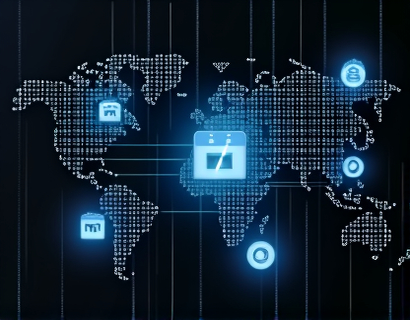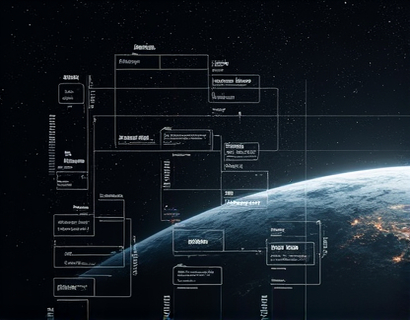Agricultural Software: Revolutionizing Farming Operations with Tailored Tech Solutions for Enhanced Efficiency and Productivity
In the rapidly evolving landscape of agriculture, the integration of advanced technology has become pivotal for the success of farming operations. Agricultural software, often referred to as AgriTech, plays a crucial role in transforming traditional farming practices into modern, efficient, and data-driven processes. This article delves into how tailored tech solutions are revolutionizing farming operations, enhancing data management, and supporting strategic decision-making, ultimately driving efficiency and productivity for farming businesses and professionals.
The Need for Agricultural Software
The agricultural sector faces numerous challenges, including climate variability, market fluctuations, and the need for sustainable practices. To address these challenges, farmers and agricultural professionals require tools that can streamline operations, optimize resource use, and provide actionable insights. Agricultural software solutions are designed to meet these needs by offering a range of functionalities that cater to the specific requirements of farming businesses.
Streamlining Farming Processes
One of the primary benefits of agricultural software is its ability to streamline various farming processes. From planting and irrigation to harvesting and post-harvest management, these tools automate and simplify tasks that were once time-consuming and error-prone. For instance, precision agriculture software uses GPS and sensor technology to monitor and manage field conditions, ensuring that each area receives the exact amount of water, fertilizer, and pesticides needed. This not only reduces waste but also increases crop yields and quality.
Another area where software significantly improves efficiency is in the management of farm equipment. Fleet management systems allow farmers to track the location, usage, and maintenance status of their machinery in real-time. This helps in scheduling maintenance activities proactively, reducing downtime, and extending the lifespan of equipment. Additionally, these systems can optimize the allocation of resources, ensuring that the right equipment is available at the right time and place.
Enhancing Data Management
Data is the backbone of modern agriculture, and effective data management is crucial for informed decision-making. Agricultural software provides robust platforms for collecting, storing, and analyzing vast amounts of data. This includes historical weather patterns, soil moisture levels, crop health metrics, and market trends. By centralizing this data, farmers can gain a comprehensive view of their operations, identify trends, and make data-driven decisions.
Cloud-based solutions are particularly beneficial in this regard, as they offer scalable storage and access to data from anywhere. This flexibility is essential for farmers who need to monitor their operations remotely or collaborate with team members and consultants. Data visualization tools within these platforms further enhance the user experience by presenting complex data in easy-to-understand charts and graphs, facilitating quicker and more accurate decision-making.
Supporting Strategic Decision-Making
Strategic decision-making is critical for the long-term success of farming businesses. Agricultural software empowers farmers and agricultural professionals to make informed decisions by providing insights and analytics that were previously unavailable. For example, predictive analytics can forecast crop yields based on current conditions and historical data, helping farmers plan for sales and inventory. This foresight allows for better risk management and financial planning.
Supply chain management software integrates with farming operations to optimize the flow of goods from farm to market. By tracking inventory levels, demand forecasts, and logistics, these tools help farmers ensure that they have the right products in the right quantities at the right time. This reduces waste and increases profitability by minimizing excess stock and stockouts.
Improving Sustainability and Resource Management
Sustainability is a growing concern in agriculture, and software solutions play a vital role in promoting environmentally friendly practices. Precision agriculture, as mentioned earlier, not only optimizes resource use but also reduces the environmental impact of farming. By applying inputs like water and fertilizers more precisely, farmers can minimize runoff and soil degradation, preserving natural resources for future generations.
Additionally, software can help farmers adopt sustainable practices by providing guidelines and best practices based on scientific research. For instance, integrated pest management (IPM) systems use data to monitor pest populations and recommend the most effective and least harmful control methods. This approach reduces the reliance on chemical pesticides, benefiting both the environment and human health.
Enhancing Farmer Productivity and Well-Being
The impact of agricultural software extends beyond operational efficiency to the well-being of farmers and their families. By automating routine tasks and providing real-time insights, these tools reduce the physical and mental strain associated with traditional farming methods. Farmers can focus more on strategic activities and less on manual labor, leading to a better work-life balance.
Moreover, mobile applications and web-based platforms make it easier for farmers to access information and manage their operations on-the-go. This flexibility is particularly valuable in remote areas where internet connectivity may be limited. With the ability to check soil moisture levels, weather forecasts, and market prices from a smartphone, farmers can stay informed and responsive, even when away from the farm.
Case Studies and Success Stories
Several farming operations have already seen significant benefits from adopting agricultural software. For example, a large-scale corn farm in the Midwest implemented a precision agriculture system that included GPS-guided tractors and variable rate technology for seed and fertilizer application. As a result, the farm achieved a 15% increase in yield and a 20% reduction in input costs. The data-driven approach allowed the farm to optimize resource use and respond quickly to changing conditions.
Another success story comes from a small-scale vegetable grower who used a farm management software to track crop health and sales. The software provided real-time data on plant growth and market demand, enabling the grower to adjust planting schedules and harvest times. This led to a 10% increase in sales and a more consistent supply of fresh produce to local markets.
Challenges and Considerations
While the benefits of agricultural software are clear, there are several challenges and considerations that farmers and agricultural professionals should be aware of. One major challenge is the initial cost of implementing these systems, which can be a barrier for smaller operations. However, many software providers offer flexible pricing models and subscription-based services to make these solutions more accessible.
Another consideration is the need for training and support to ensure that users can effectively utilize the software. Providers often offer training programs and customer support to help farmers and their teams get the most out of the technology. Additionally, data security and privacy are critical concerns, especially when dealing with sensitive information such as financial data and personal details.
Future Trends in Agricultural Software
The future of agricultural software is promising, with several emerging trends set to further transform the industry. One such trend is the integration of artificial intelligence (AI) and machine learning (ML) to enhance predictive capabilities and automate more complex tasks. AI-powered systems can analyze vast datasets to identify patterns and make recommendations that human analysts might miss.
Another trend is the development of Internet of Things (IoT) devices that can be deployed in the field to collect real-time data. These devices, ranging from soil moisture sensors to drone-mounted cameras, provide a wealth of information that can be used to optimize farming operations. The combination of IoT and cloud computing enables seamless data flow and advanced analytics, further enhancing decision-making.
Lastly, the rise of blockchain technology in agriculture holds potential for improving traceability and transparency in the supply chain. By recording transactions on a decentralized ledger, stakeholders can verify the origin, quality, and journey of agricultural products, building trust and ensuring compliance with regulations.
Conclusion
Agricultural software is revolutionizing farming operations by streamlining processes, enhancing data management, and supporting strategic decision-making. These tailored tech solutions not only increase efficiency and productivity but also promote sustainability and improve the well-being of farmers. As the industry continues to evolve, the integration of AI, IoT, and blockchain will further drive innovation and growth. Embracing these technologies is essential for farming businesses and professionals looking to stay competitive and thrive in the modern agricultural landscape.










































